Garlic is one of the most beloved ingredients in kitchens around the world, prized for its bold flavor and health-boosting properties. What many people don’t realize is how easy it is to grow garlic plants right at home, whether in your backyard garden or a sunny windowsill indoors. With just a few cloves and some basic care, you can cultivate your own supply of fresh, aromatic garlic that beats anything store-bought.
In this complete guide, we’ll walk you through everything you need to know to successfully grow garlic plants, from selecting the right varieties and planting techniques to watering, harvesting, and storing your homegrown garlic.
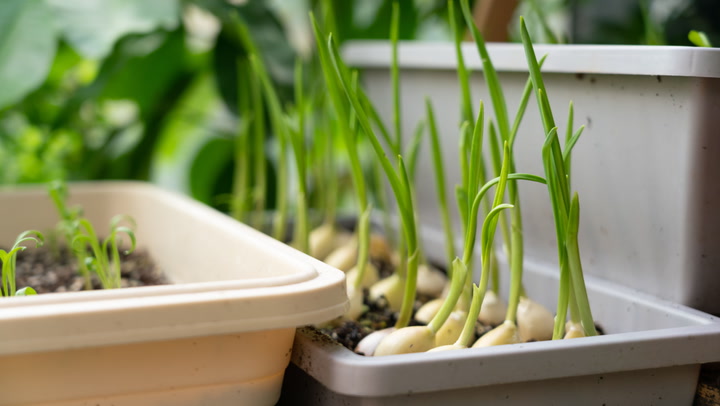
Why You Should Grow Garlic at Home
Before we dive into the how-to, let’s talk about why growing garlic at home is worth your while:
- Fresh, chemical-free garlic with superior flavor
- A low-maintenance, hardy crop that thrives in many conditions
- Can be grown indoors in pots or outdoors in beds and containers
- Health benefits like immune-boosting, anti-inflammatory, and antioxidant properties
- Produces both bulbs and edible green shoots (called garlic scapes)
Best Garlic Varieties to Grow
There are two main types of garlic to choose from:
1. Hardneck Garlic (Allium sativum var. ophioscorodon)
- Better suited for colder climates
- Produces fewer but larger cloves
- Grows a flowering stalk (garlic scape) you can harvest and eat
- Examples: Rocambole, Purple Stripe, Porcelain
2. Softneck Garlic (Allium sativum var. sativum)
- Thrives in milder climates
- Yields more cloves per bulb
- No flower stalk; longer shelf life
- Examples: Silverskin, Artichoke
Tip: If growing indoors, opt for softneck varieties since they adapt better to container and indoor conditions.
What You’ll Need
- Fresh garlic bulbs (organic or from a reputable nursery)
- Well-draining soil or potting mix
- Raised garden bed, ground space, or deep containers
- Compost or organic fertilizer
- Sunny spot (outdoor garden or south-facing window indoors)
- Watering can or spray bottle
Best Time to Plant Garlic
- Outdoors: Plant in fall (October–November) for a summer harvest. Garlic prefers a cold period for optimal bulb development.
- Indoors: You can plant garlic any time of year, though fall planting yields stronger bulbs.
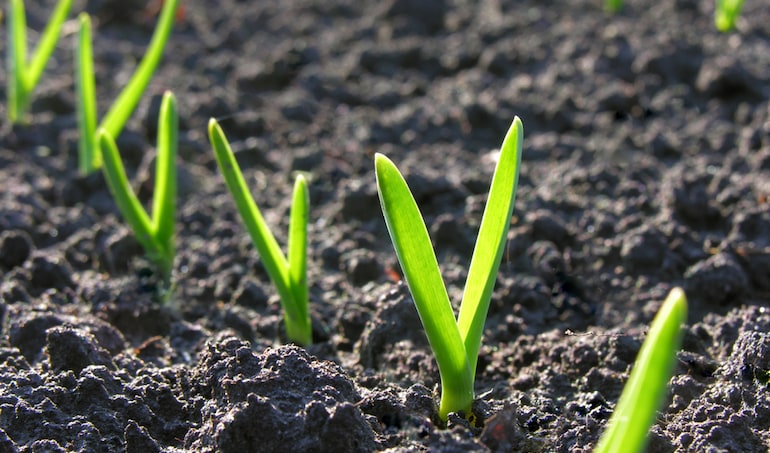
How to Plant Garlic Outdoors
1. Prepare the Soil
Garlic loves rich, loose, well-draining soil. Work compost and organic matter into the soil to a depth of 6–8 inches. Ideal soil pH: 6.0–7.0.
2. Break Apart the Bulbs
Carefully separate individual garlic cloves from the bulb, keeping the papery skin intact.
3. Plant the Cloves
- Plant cloves 2 inches deep with the pointed end facing up.
- Space them 4–6 inches apart in rows 12 inches apart.
- Cover with soil and water lightly.
4. Mulch and Water
Apply a 2–3 inch layer of straw, leaves, or mulch to insulate the soil and prevent weed growth.
Watering Tip: Keep soil consistently moist but not soggy. Reduce watering as harvest time approaches.
How to Grow Garlic Indoors
Growing garlic indoors is a great option for those with limited outdoor space. While indoor garlic may produce smaller bulbs, the flavorful green shoots and occasional bulbs are well worth it.
1. Choose a Container
Use a container at least 8–10 inches deep with good drainage holes.
2. Add Potting Mix
Fill with a well-draining potting mix or a mix of compost, sand, and garden soil.
3. Plant the Cloves
Plant cloves 2 inches deep and 3–4 inches apart with the pointed end up.
4. Place in a Sunny Spot
Garlic needs 6–8 hours of sunlight daily. A south-facing windowsill, balcony, or grow light setup works well.
5. Water Consistently
Water when the top inch of soil feels dry, but avoid waterlogging.
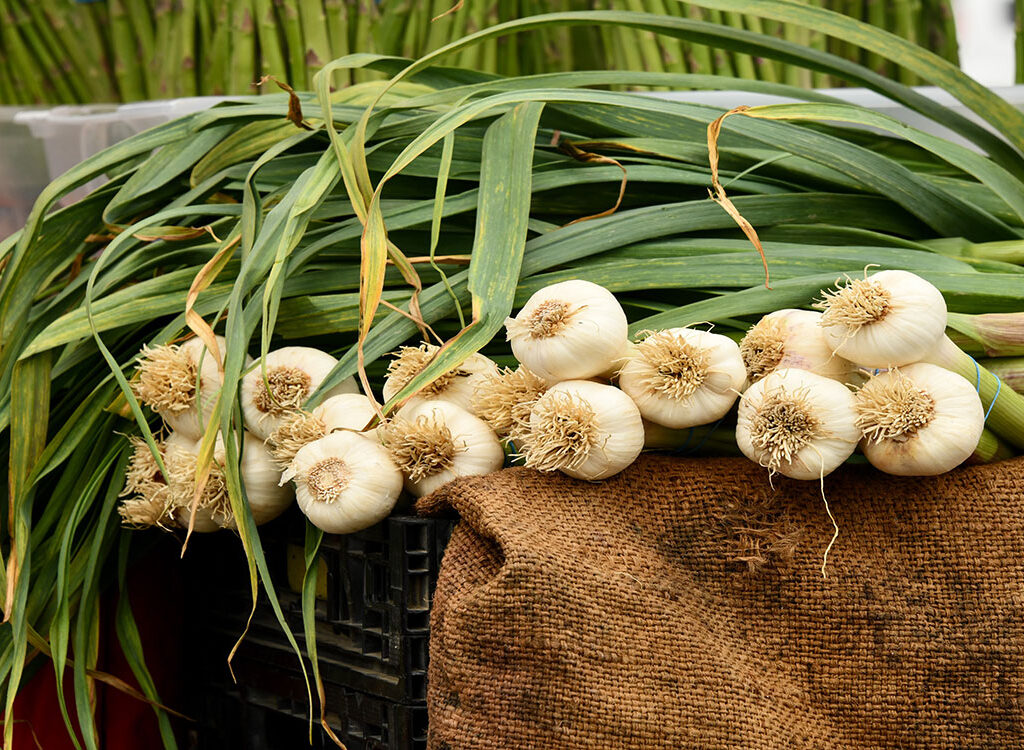
Caring for Garlic Plants
Whether indoors or outdoors, garlic care is fairly simple:
- Sunlight: 6–8 hours of full sun daily.
- Watering: Keep soil consistently moist, especially in spring as bulbs develop.
- Feeding: Apply an organic all-purpose fertilizer or compost tea once a month.
- Mulching: Outdoors, reapply mulch to maintain even soil moisture and suppress weeds.
Dealing with Pests and Problems
Garlic is naturally pest-resistant but can occasionally encounter issues like:
- Aphids: Spray with a water and dish soap solution.
- Fungal diseases: Ensure good air circulation and avoid wet foliage.
- Rot: Avoid overwatering and plant in well-draining soil.
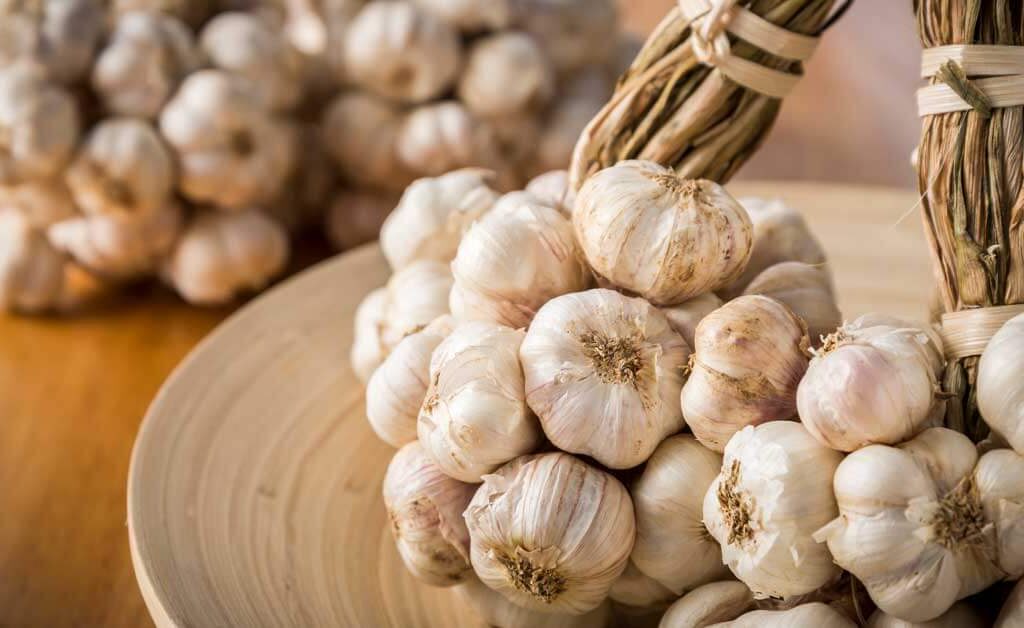
Harvesting Garlic
Time to harvest:
- Outdoors: Typically in mid to late summer (July–August), when leaves turn yellow and start to fall.
- Indoors: About 8–10 months after planting, though you can trim green shoots for cooking earlier.
How to Harvest:
- Loosen soil around bulbs with a garden fork.
- Gently pull up bulbs without bruising.
- Shake off excess soil and avoid washing immediately.
Garlic Scapes:
For hardneck varieties, harvest curly scapes in late spring to early summer before they flower. Use them in stir-fries, pesto, or grilled dishes.
Curing and Storing Garlic
Curing:
- Hang bulbs in a warm, dry, airy place out of direct sunlight for 2–3 weeks.
- Once papery skins form and stems dry, trim roots and cut stems (for softneck) or braid them for storage.
Storage:
- Keep in a cool, dry, dark place.
- Ideal storage temperature: 55°F–60°F (13°C–16°C)
- Softneck garlic lasts 6–9 months, while hardneck keeps for 3–6 months.
Cooking with Homegrown Garlic
The beauty of growing garlic is having fresh, flavorful cloves at your fingertips. Use your homegrown garlic in:
- Roasted vegetable dishes
- Stir-fries and soups
- Garlic butter and spreads
- Homemade pickles and marinades
- Fresh green garlic shoots in salads and omelets
Health Benefits of Garlic
Homegrown garlic isn’t just tastier — it’s good for you too! Benefits include:
- Boosting immune function
- Lowering cholesterol and blood pressure
- Fighting bacterial and fungal infections
- Acting as a natural anti-inflammatory
Final Thoughts
Growing garlic in your garden or indoors is an easy, rewarding project for beginner and seasoned gardeners alike. With minimal care, you’ll enjoy aromatic, flavorful bulbs and green shoots that elevate your culinary creations.
Whether you’re planting cloves in fall for a summer harvest or keeping a pot on your windowsill for year-round garlic greens, the satisfaction of growing your own is unbeatable.

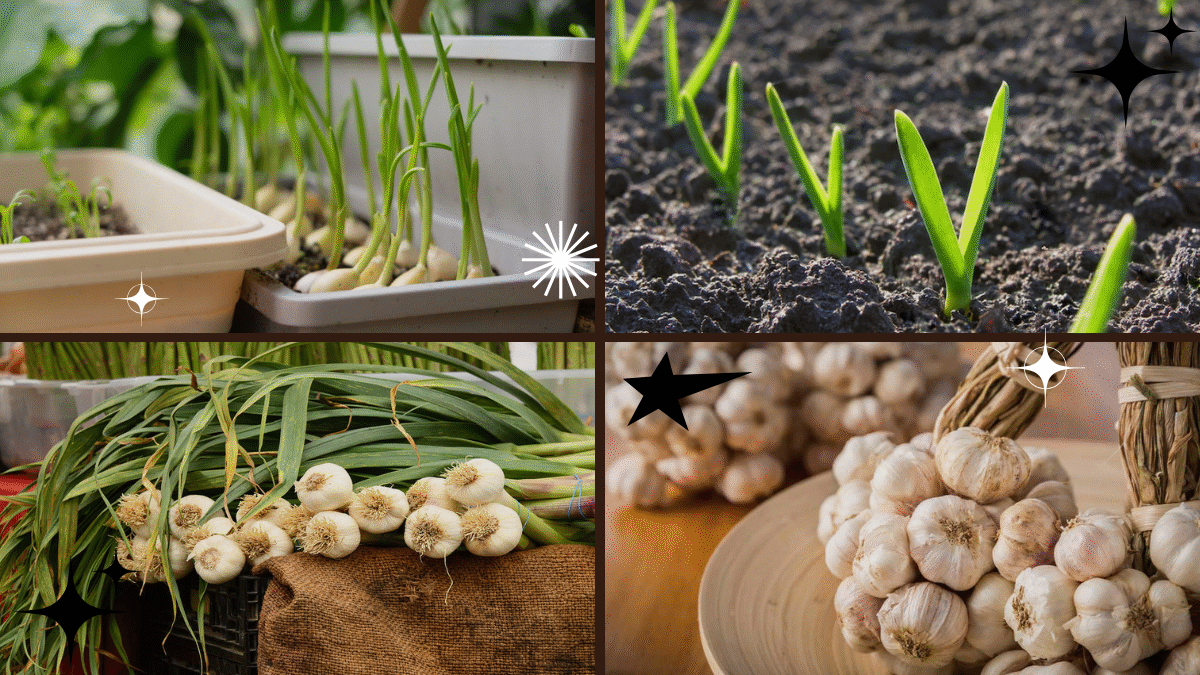



Leave A Comment